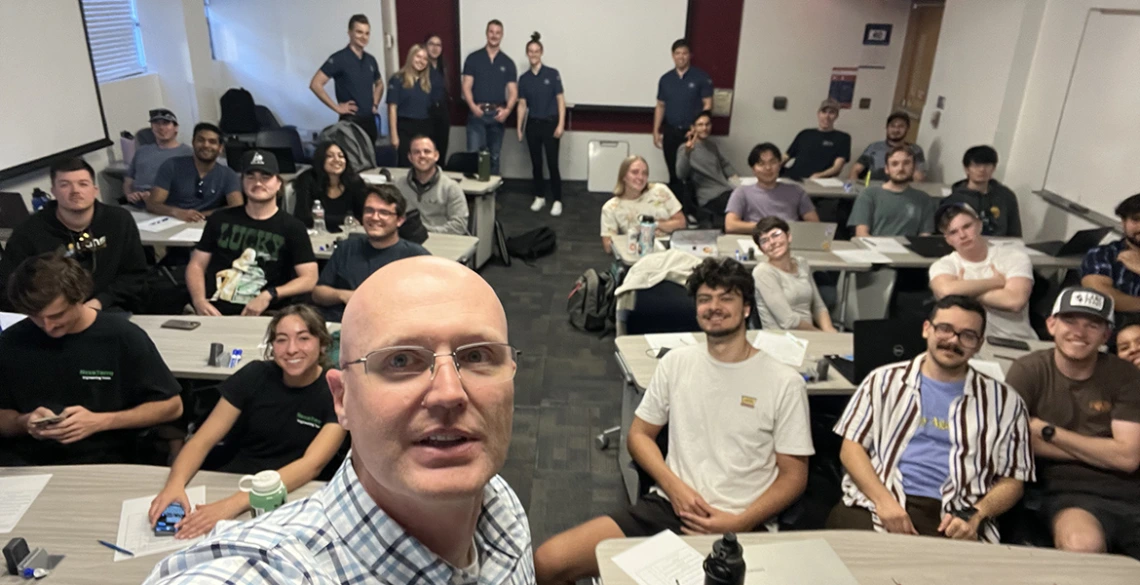One-on-One with Mentor Matt Christensen

Matt Christensen takes a selfie with the students he teaches in ENGR 498. The class is composed of the six teams he is mentoring this academic year.
Matt Christensen has always enjoyed working with students, and he became a mentor to pay forward the guidance he received as a student. He has now worked with sponsored student design teams at two universities with two different companies. At the University of Arizona, he is working with six engineering teams developing projects like an eight-legged robot for land inspection, a wrist brace for carpal tunnel relief, and a 3D printer that uses mine tailings in its concrete.

Matt Christensen
Christensen is a mechanical engineer with a BS from Brigham Young University and a master’s from Purdue. He also earned a master’s in product development from Northwestern University. His varied career has led him most recently to Raytheon Industries, where he is department leader for engineering prototyping and fabrication.
What is your personal experience of having a mentor?
Throughout my life I have been blessed to have mentors in my education, career, personal life, and my outside activities. Many have been older than me, some have been younger, but all have had experience that I learned from. They selflessly helped me to "learn in five minutes what it took another a lifetime to learn," as my grandma would say. This has sped my growth and development, helping me to have a greater impact on the world around me.
How does being on a mentored design team help students in the professional world?
Most engineering education is focused on teaching the knowledge required to do engineering: the physical laws, principles, and equations needed by engineers. Being on a mentored design team gives students the opportunity to experience the process of engineering.
They get to be part of a full engineering project, often for the first time, where they experience common workplace situations that they will face after graduation. These include group dynamics, customer and stakeholder interactions, schedule and budget tracking, and things not going well during integration and testing. This rounds out their education and prepares them to make a positive impact in their future employers' organizations.
Describe a moment when you saw clearly how students benefit from mentorship.
Nothing beats the excitement of a student connecting the dots between their prior coursework and their project. I see this while guiding a student in solving a problem; showing them how to apply the principles and concepts that they learned in another course to their project. As they make the connection between the problem in front of them and the thought processes that they learned earlier, applying their knowledge in a way that is new to them, they light up. They realize how they are progressing from learner to doer and they are empowered to become practicing engineers.
What have your students told you about their experiences working in the Engineering Design Center?
They have shared how important and beneficial it is to have a dedicated space, convenient to campus, where they can go and have access to many of the tools and technologies they need for their projects. This allows them to focus on their project without the delays of coordinating tools and facilities. It also provides access to experts who can teach them several of the skills required to execute their projects, like soldering and 3D printing.

